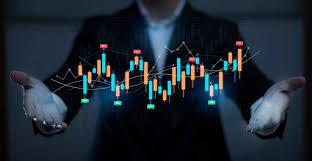
In recent years, forex algorithmic trading Trading Asia has become a leading resource to understand financial trading techniques, especially focusing on forex algorithmic trading. This practice represents a significant shift in how traders engage with the foreign exchange market, relying on complex algorithms and automated systems to execute trades. In this article, we will delve into the fundamentals of Forex algorithmic trading, its benefits, potential drawbacks, and strategies for success, as well as a glimpse into the future of this evolving field.
Understanding Forex Algorithmic Trading
Algorithmic trading in forex refers to the automated process of executing trades based on predetermined criteria using computer programs. Traders utilize algorithms to analyze market data, identify trading opportunities, and execute orders at optimal times. These algorithms can evaluate vast amounts of data and execute trades at lightning speed, far beyond the capacity of human traders. This automation not only enhances efficiency but also minimizes emotional decision-making, which can often lead to suboptimal trading results.
The Advantages of Algorithmic Trading
There are several advantages associated with Forex algorithmic trading, including:
- Speed: Algorithms can analyze market conditions and execute trades in milliseconds, allowing traders to capitalize on fleeting market opportunities.
- Consistency: Automated trading removes emotional elements from trading decisions, leading to more consistent outcomes aligned with predefined strategies.
- Backtesting: Traders can backtest their algorithms against historical data to evaluate potential effectiveness before deploying them in the live market.
- Diversification: Algorithms can monitor multiple pairs simultaneously, enabling traders to diversify their strategies and minimize risk.
Common Strategies Used in Forex Algorithmic Trading
Various strategies can be employed in forex algorithmic trading, and traders often tailor these strategies to fit their individual goals and market conditions. Some common approaches include:
Trend Following
This strategy involves identifying and capitalizing on emerging market trends. Algorithms analyze price movements and indicators to determine whether an asset is in an uptrend or downtrend, placing trades that align with the prevailing direction.
Mean Reversion

Mean reversion strategies assume that asset prices will revert to their historical averages over time. Algorithms will identify overbought or oversold conditions and execute trades anticipating a price correction back to its mean.
Arbitrage
Arbitrage strategies exploit price discrepancies between different markets or instruments. Algorithms can identify these discrepancies and execute simultaneous trades to profit from the differences in pricing.
The Technology Behind Algorithmic Trading
The backbone of forex algorithmic trading relies on advanced technology, including high-speed internet connections, powerful computers, and sophisticated software. These technologies enable the rapid processing of large datasets and ensure timely execution of trades. Additionally, many traders leverage programming languages such as Python, C++, or R to develop their own trading algorithms. These languages provide the flexibility and power required to create complex trading models.
Challenges and Risks of Forex Algorithmic Trading
While algorithmic trading offers numerous benefits, it is not without its challenges and risks. Some of the primary concerns include:
- Technical Failures: System malfunctions or connectivity issues can lead to significant losses, especially in volatile market conditions.
- Market Risks: Algorithms operate based on historical data; unexpected market events can disrupt normal price patterns and lead to losses.
- Over-optimization: Traders may inadvertently create algorithms that perform well on historical data but fail in live conditions due to excessive tweaking for past performance.
- Regulatory Risks: The regulatory landscape for algorithmic trading is continuously evolving, which may impact trading strategies and compliance requirements.
Conclusion: The Future of Forex Algorithmic Trading
As technology continues to advance, the future of forex algorithmic trading promises to be both exciting and complex. Innovations in artificial intelligence and machine learning are poised to revolutionize how algorithms are developed and refined, making it possible for traders to adapt their strategies to changing market dynamics with unprecedented speed. As a result, staying informed about the latest trends, tools, and regulations will be essential for anyone looking to succeed in this fast-paced environment.
Forex algorithmic trading has opened a new frontier for traders, providing a means to enhance their trading efficiency and effectiveness. By understanding the methodologies, benefits, and risks involved, traders can leverage these advanced strategies to navigate the complexities of the forex market. Whether you are a seasoned trader or just starting, delving into algorithmic trading could potentially unlock new avenues for success in your trading journey.